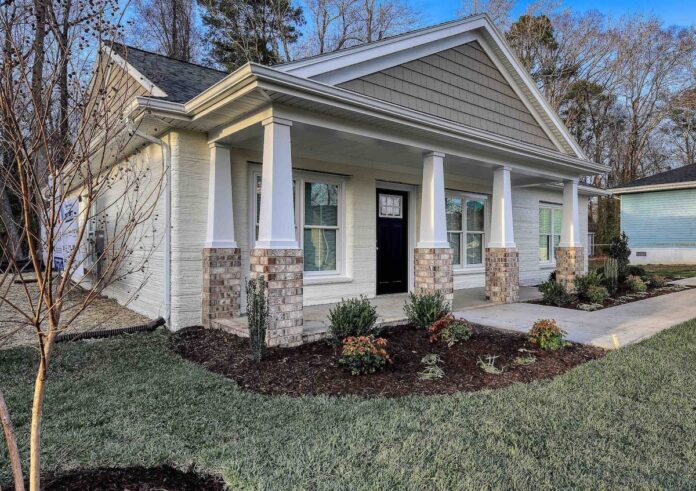Shelter is a basic tier in Maslow’s hierarchy of needs. And no one has responded to this fundamental requirement more than Habitat for Humanity, the not-for-profit global organization that is dedicated to building safe and affordable homes.
Today, more than 1.6 billion people on the planet lack adequate shelter. Habitat, through the efforts of volunteers and donations, is building homes to address this global challenge and break the cycle of poverty and homelessness.
One of Habitat’s most famous volunteers is the former U.S. President Jimmy Carter who along with his wife Rosalynn, since 1984, have lent their efforts to the building of Habitat homes across the globe. The Carter Work Project has become an annual event for Habitat only interrupted recently by the COVID-19 pandemic. But it was a story appearing online yesterday written by Vanessa Bates Ramirez that caught my eye leading to me writing this posting.
A house in Williamsburg, Virginia, built for Habitat has used 3D printing for the major components of the construction. Completed before Christmas last year with a family moving in time for the holidays, the 3D printed home has exterior walls made of 3D-printed concrete. Construction of the walls took only 28 hours to be complete.
How 3D Printing Contributes to Reducing Housing Costs
The use of 3D printing helped reduce building costs by 15% and from start to finish was completed in three months. The company constructing the home was Alquist which used a Danish manufactured 3D printer to do this first job for Habitat.
Alquist’s mission statement is to reduce the cost of home construction and assist in rural revitalization throughout the United States. It currently is working in 20 states using 3D printers on projects to construct new roads, elevator shafts, retaining walls, and other traditional concrete structures.
Since the beginning of the COVID-19 pandemic, American costs for lumber have risen 50%. This means wood for framing and walls contributed to an average increase of $25,000 per home in 2021. By 3D printing much of the home’s walls, however, Alquist can remove the added cost.
The printer Alquist is using comes from a company named COBOD which is an acronym for Construction Of Buildings On Demand. Called the BOD2, the printer can be mounted on a variety of truss frames that can be configured for various project types and building sites. The structure lends stability to the printing process which is guided by a surface mapping tool that compensates for non-level and uneven surfaces as it lays down concrete. The print nozzle is designed to smooth or texture the concrete as required. Using the BOD2 means less cladding is needed to frame walls, and also less post-treatment of the finished concrete compared to traditional construction techniques. The ink material choices for it can vary from fine mortars to aggregates of up to 10 millimetres in size.
Alquist, as an added bonus for the finished Williamsburg home, has installed in the kitchen a 3D printer for the homeowners to print replacement parts such as doorknobs, and light switch covers. The Williamsburg home is the first Habitat project using 3D printing. A second should be completed next month in Tempe, Arizona.









